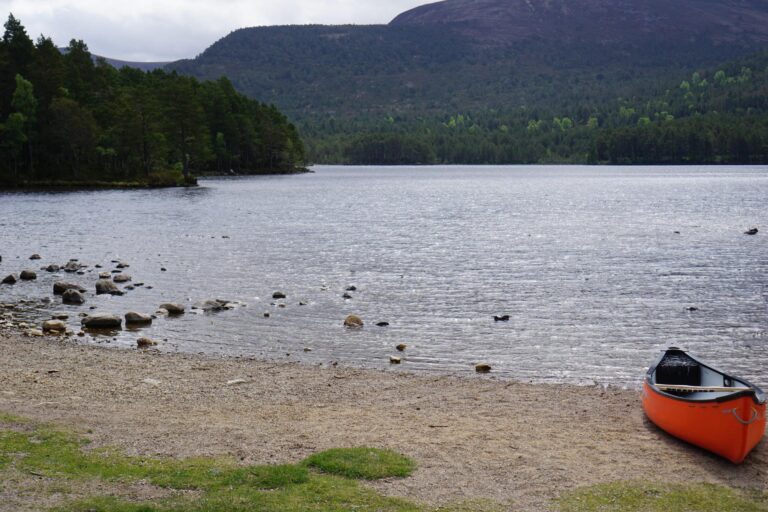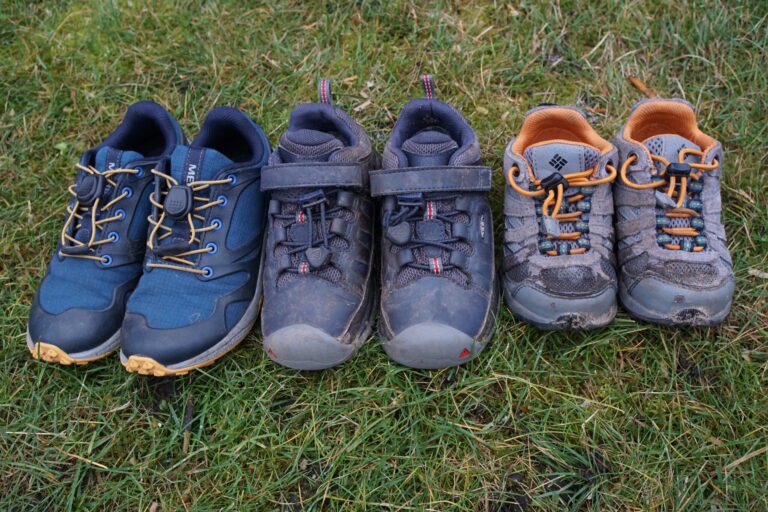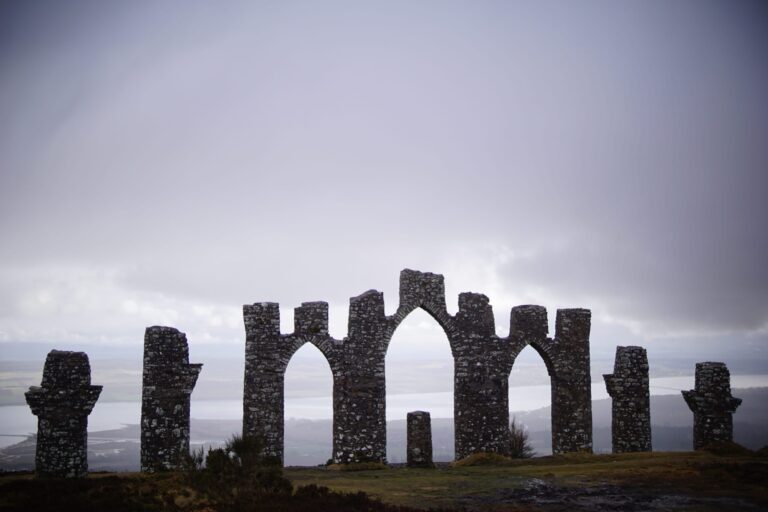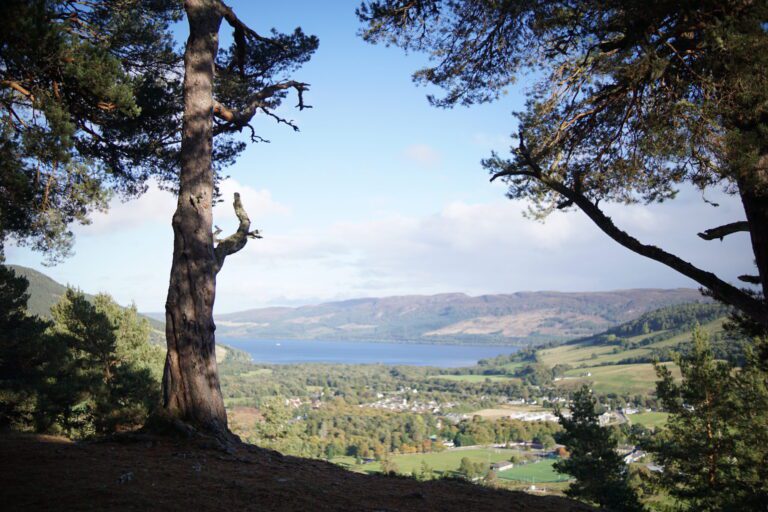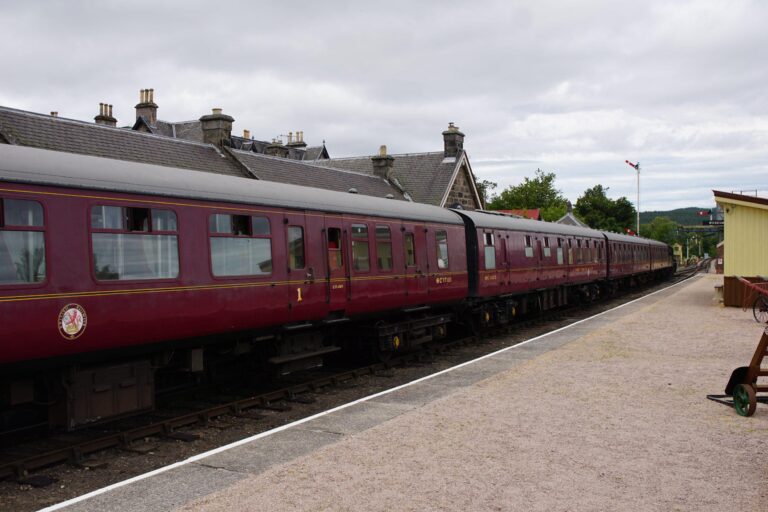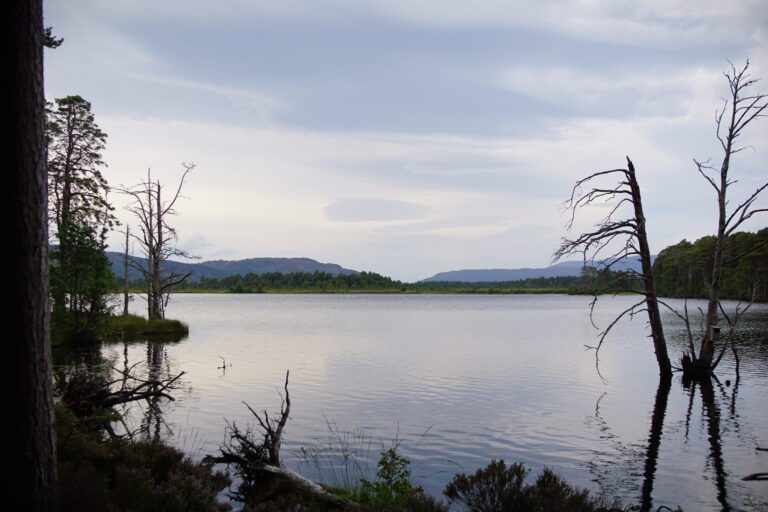Walk Inverness: Merkinch Nature Reserve and the Caledonian Canal
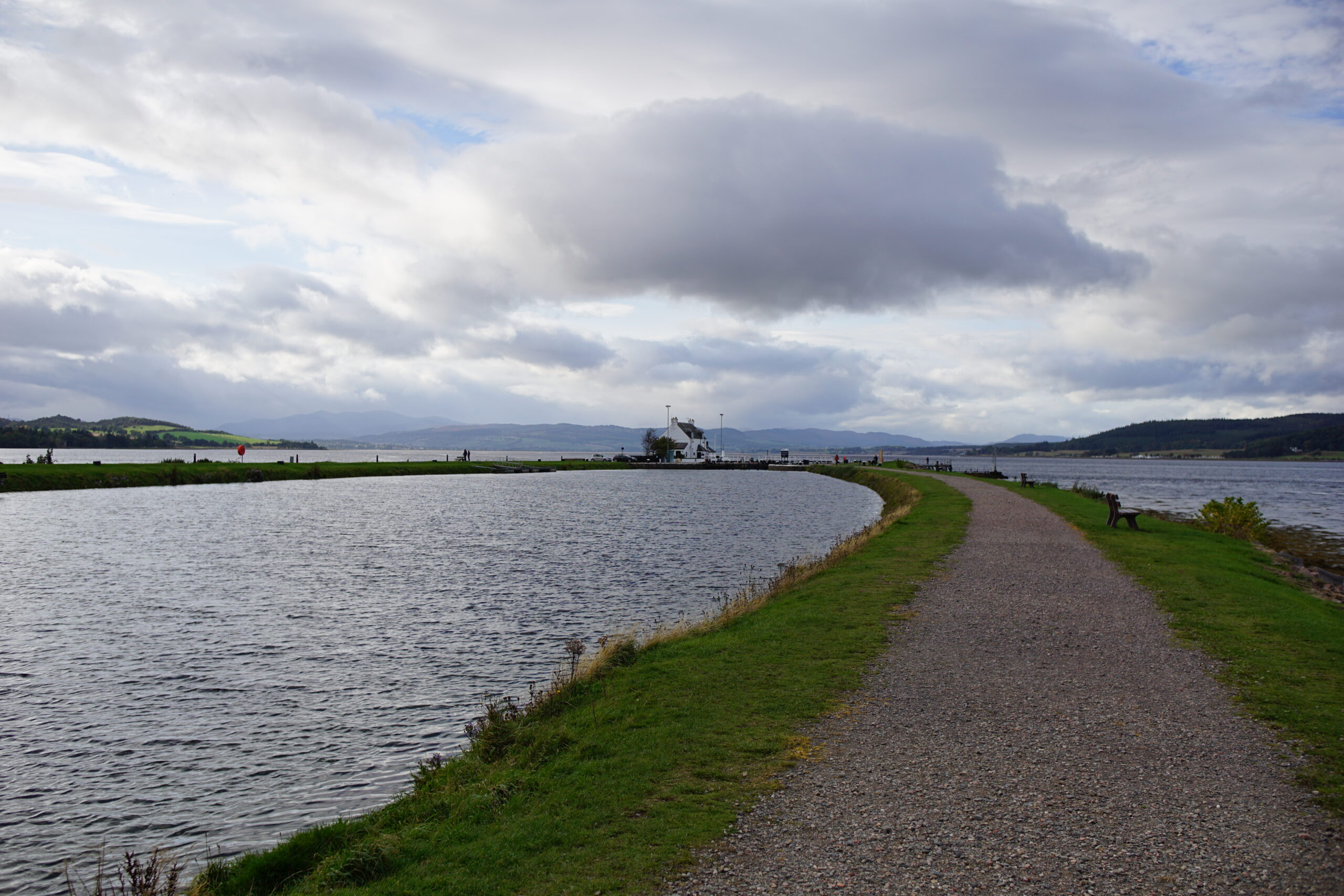
The walk through Merkinch Nature Reserve to the end of the Caledonian Canal is my favourite walk in Inverness. Magnificent views open up all around you: the Beauly Firth with the hills rising beyond, the railway, the loch-keeper’s cottage, and the water running out to sea under the Kessock Bridge. This is a gem, and not to be missed if you want to get a sense of the area around Inverness.
Distance: The route described here is 2.8 miles / 4.5km but it is very easy to shorten or lengthen this. I have suggested some extensions below.
Parking: There is parking for about 15 cars available at the mini-roundabout at the end of Kessock Road. Search for Merkinch Local Nature Reserve. It is also possible to start and end this walk at the Muirtown Basin Swingbridge (on Telford Street) which might be preferable if you are staying in Central Inverness.
Amenities: The Jammy Piece tea room is near the Muirtown Swing Bridge, and there are also some local shops nearby.
Buggy/bike friendly? This walk is very suitable for pushchairs, with wide level paths. An extra adult is helpful when crossing the railway line to open gates, but not essential. We take small children on bikes on the route, but care is needed along the sea wall (further details below).
NB: This route involves crossing a railway twice. It is gated and not a busy route, but please do take care. The walk also runs close to water at many points, please keep small children close to you.
Merkinch Nature Reserve: the route
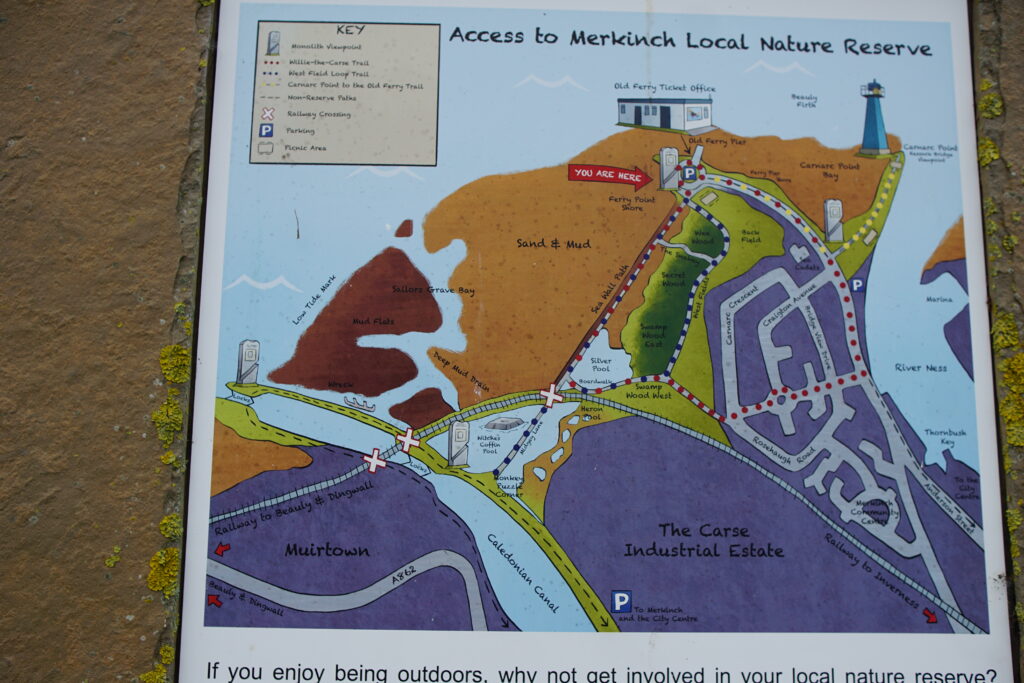
1. Admire the beautiful panoramic views from the Ferry Point. The walk starts off to the left, where you will find the entrance to the Merkinch Local Nature Reserve. Set off along the sea wall. Ahead of you is the railway line, and the end of the Caledonian Canal runs out to the right.
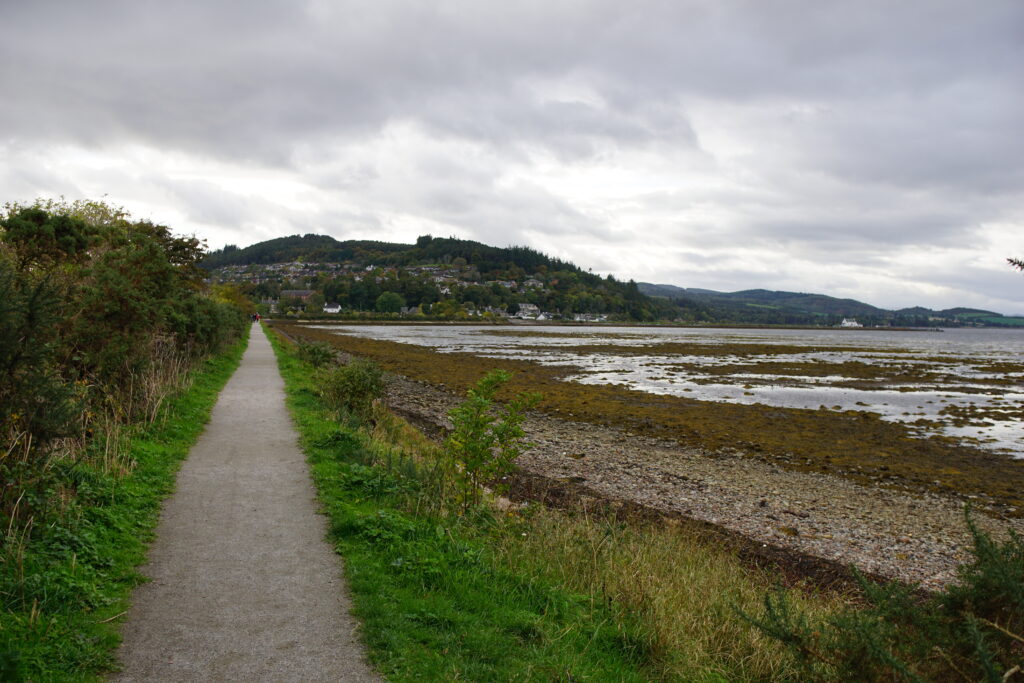
2. At the end of the sea wall, cross the railway line carefully, and continue along a straight path between two tidal pools. At low tide, you can see a box in the pool to the right known as the Witch’s Coffin.

3. The path ends at Muirtown Basin. Climb the steps or the ramp to find yourself on the towpath of a large canal basin. There are often some interesting boats here. Turn right along the towpath. Look out for some interesting old industrial machinery here.
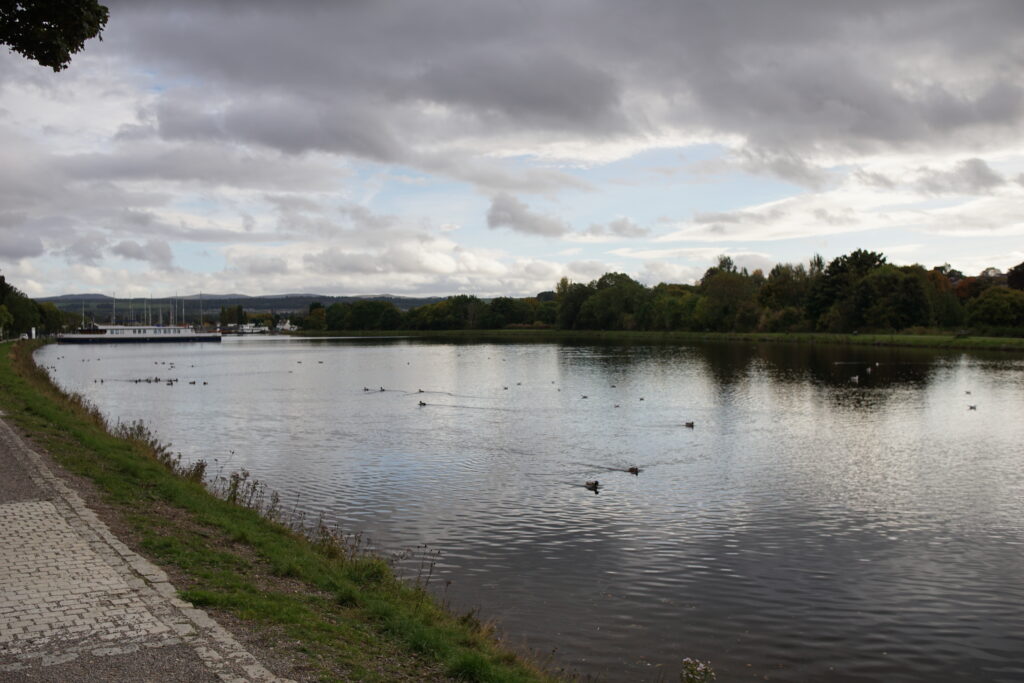
4. At the end of the towpath, do not turn left across the lock. Instead carry on straight ahead and cross the railway again. Admire the railway swing bridge as you pass. Just on the other side of the railway, you can often see a shipwreck when the tide is low. Continue along the towpath out to the end of the canal.
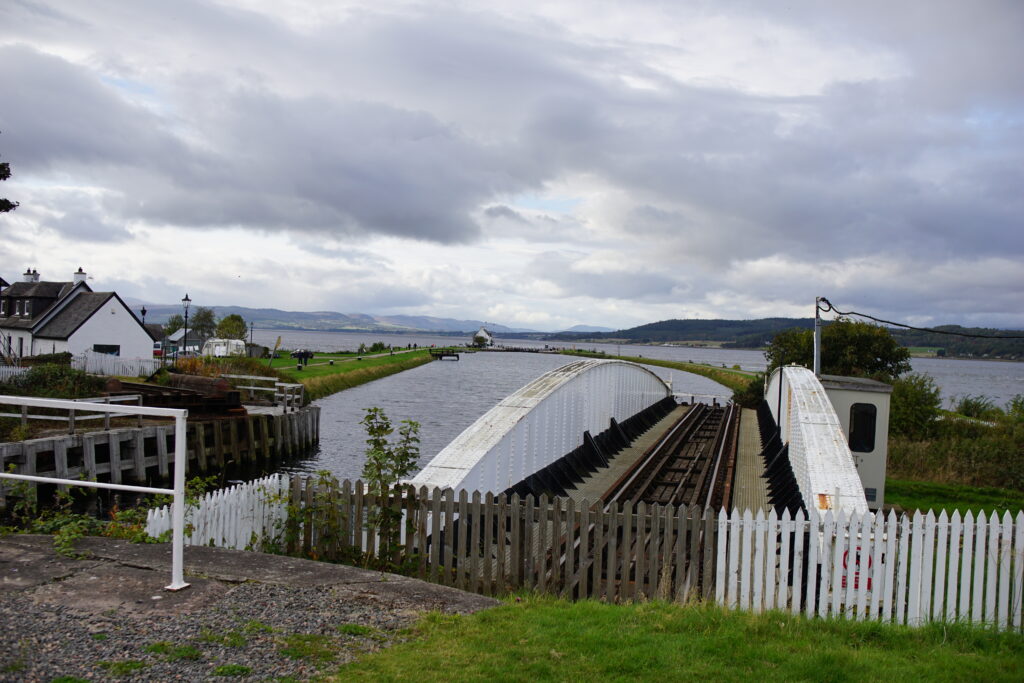
5. Admire the views at the end of the canal, before crossing the final lock (there is a ramp if required) and coming back on the other side.
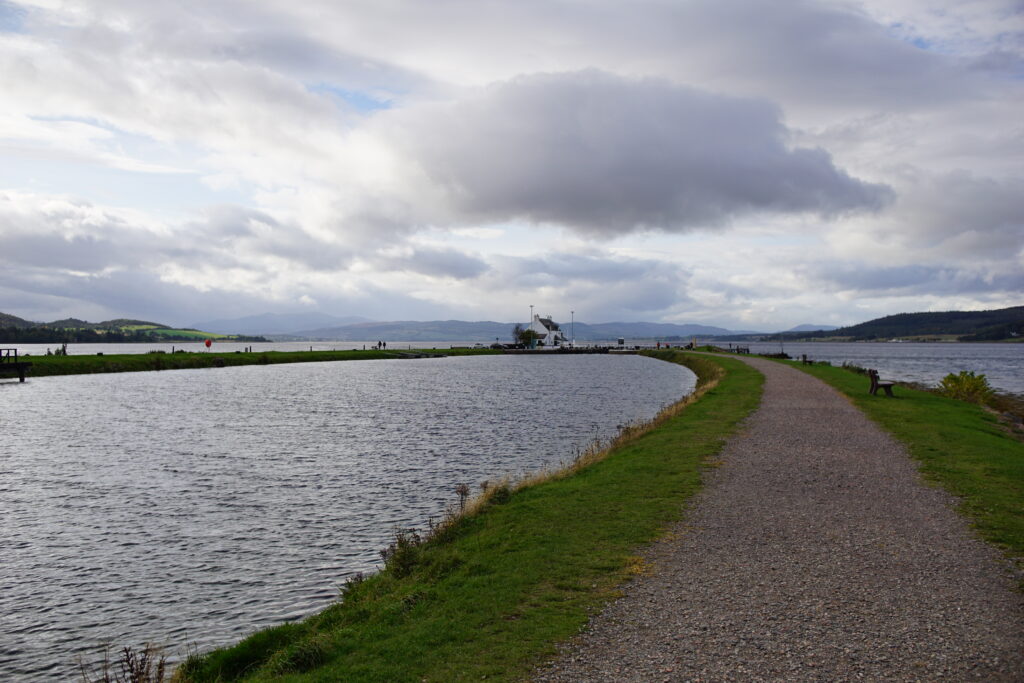
6. The village to the right is Clachnaharry, an old fishing village, and is worth exploring if you have extra time. At the far end of the village, across the main road, is the Clachnaharry Monument, which marks the Battle of Clachnaharry between warring clans in 1454. It’s a bit off the beaten track, and it can be tricky to cross the A862 bridge, but it’s an interesting piece of history! (The monument itself is not pushchair-accessible).
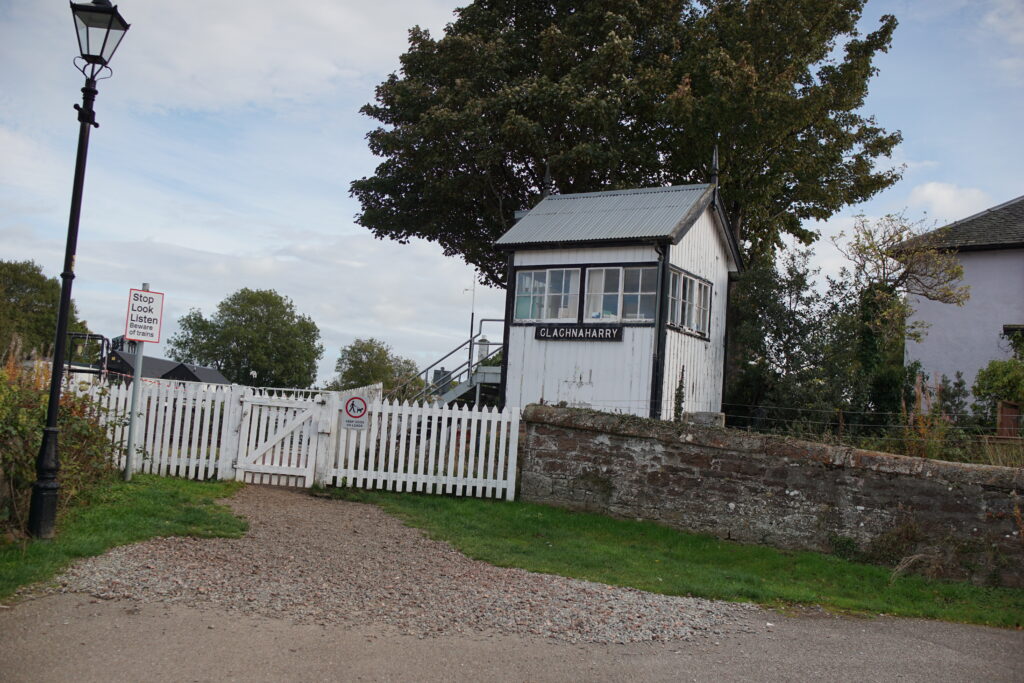
7. Cross the railway line again, and continue along the far side of Muirtown Basin, down to the road swing bridge.
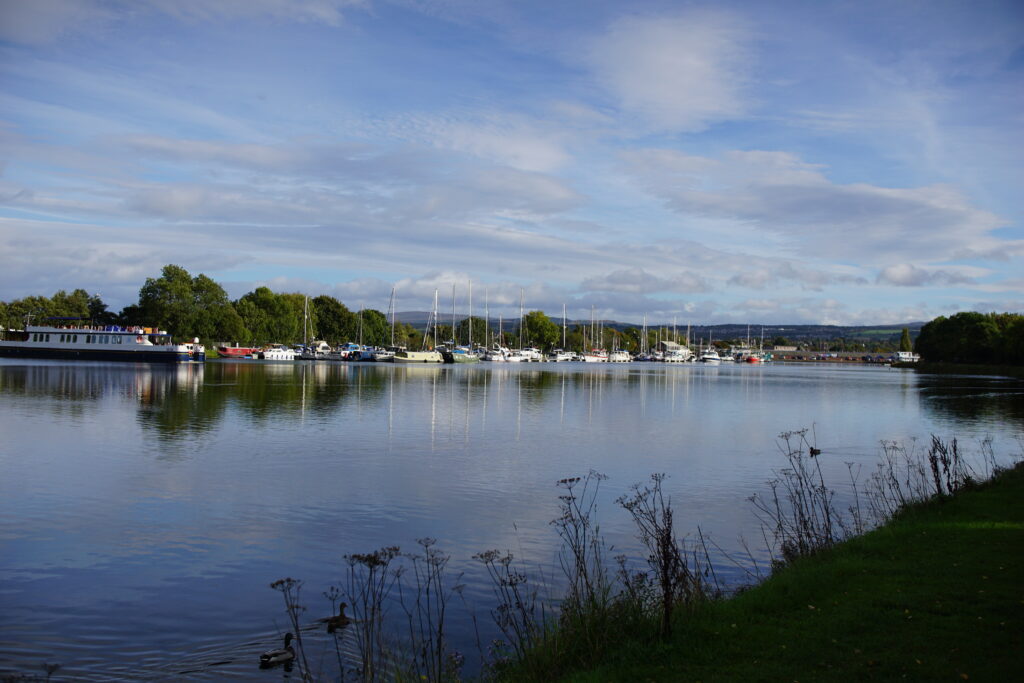
8. Immediately after the bridge, take the first turning to your left to walk back up the far side of Muirtown Basin, and then retrace your steps back through Merkinch Local Nature Reserve to the Ferry Point.

(9. If you wish to extend your walk, you could continue along Kessock Road until you reach iron gates on the left signed for Carnarc Point, which is where the River Ness meets the Beauly Firth. There are lovely views out through the Kessock Bridge from here).
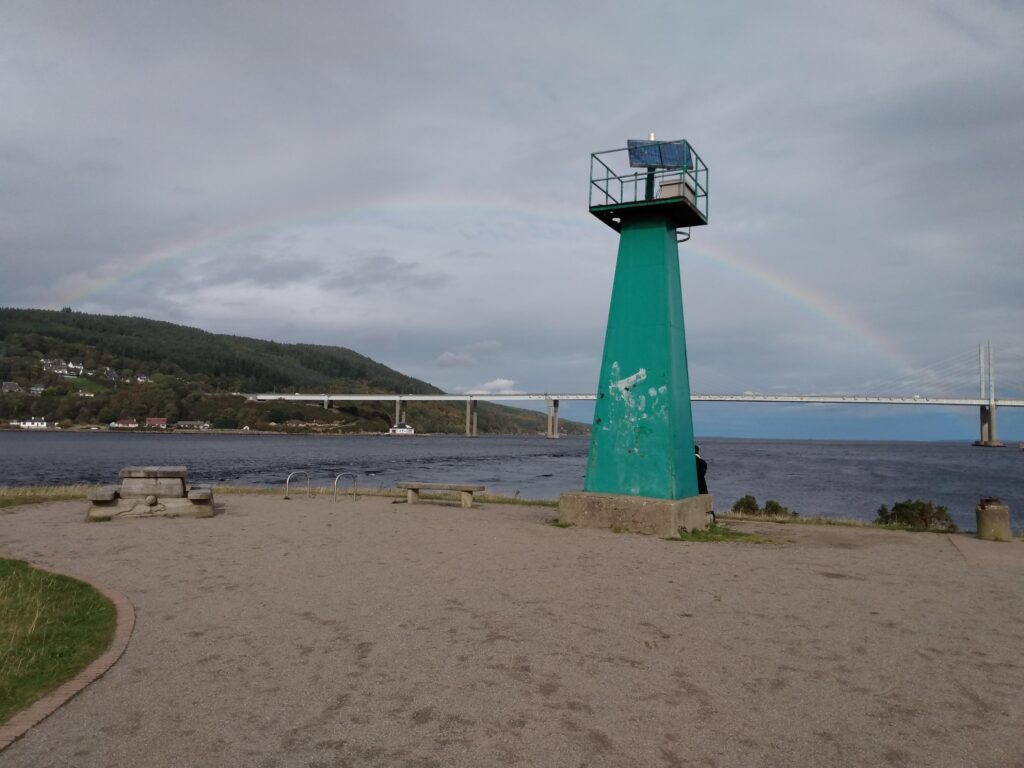
What is the terrain like?
I have quite a few terrain photos for this walk. The actual footpaths are of very good quality. There are three railway crossings, which I find manageable with a pushchair and small children, as long as the children are listening well. There is a sloping ramp up to the Caledonian Canal.
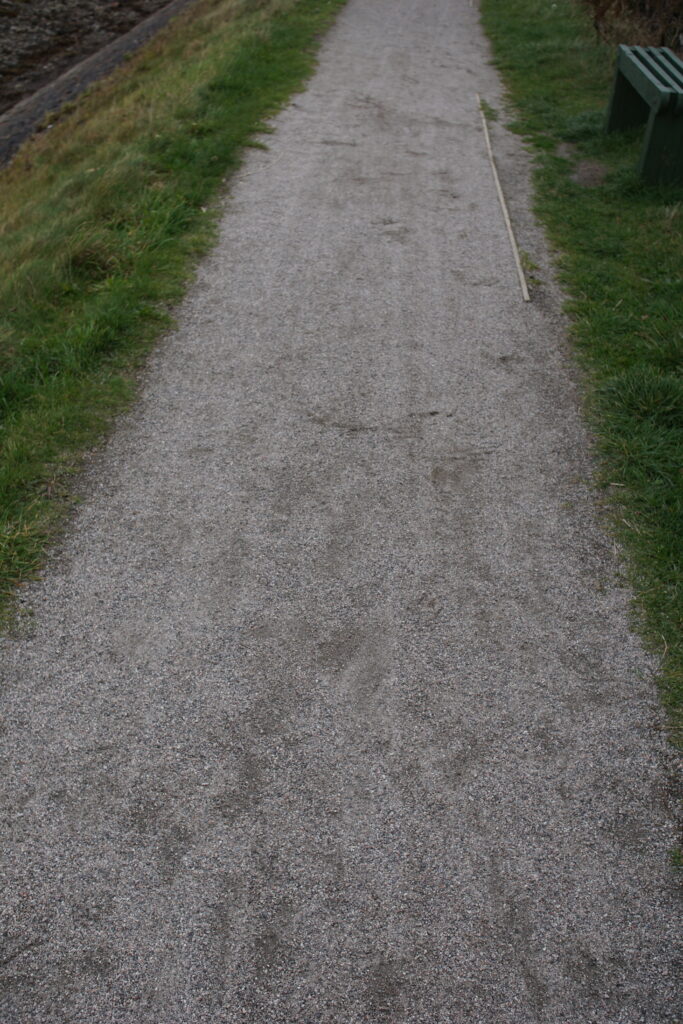
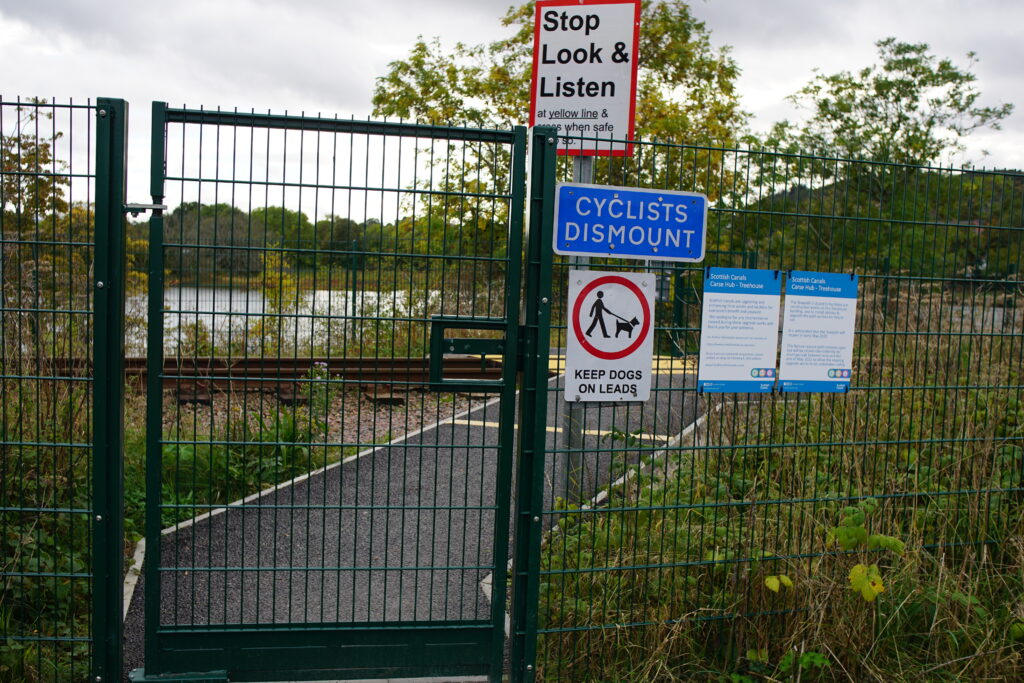

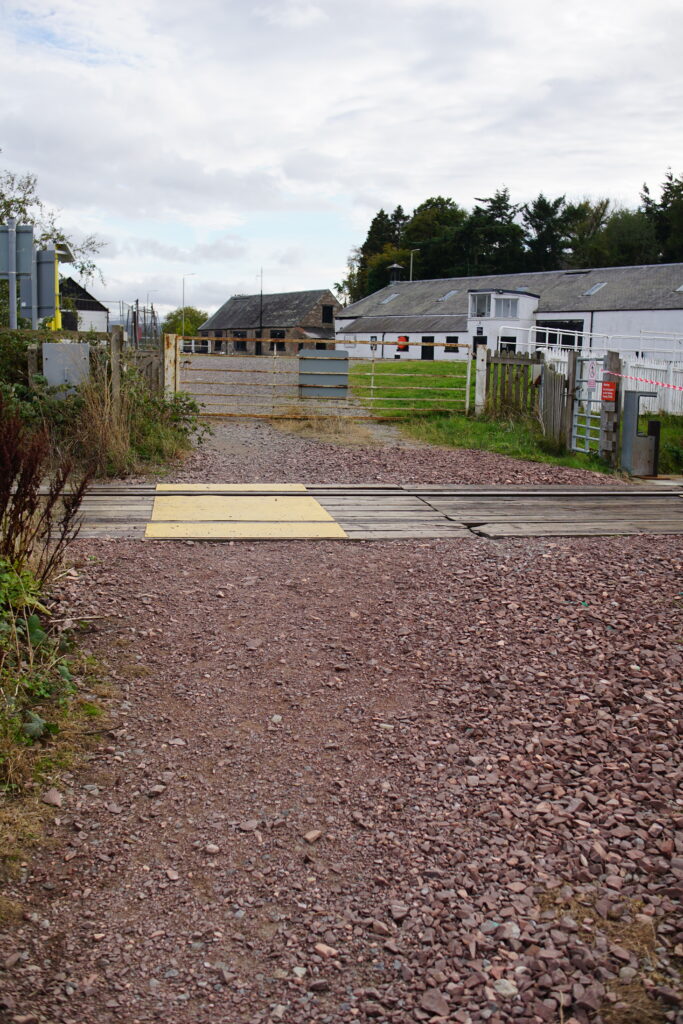
Care should be taken with small children on the sea wall, as there is quite a drop off to the side.
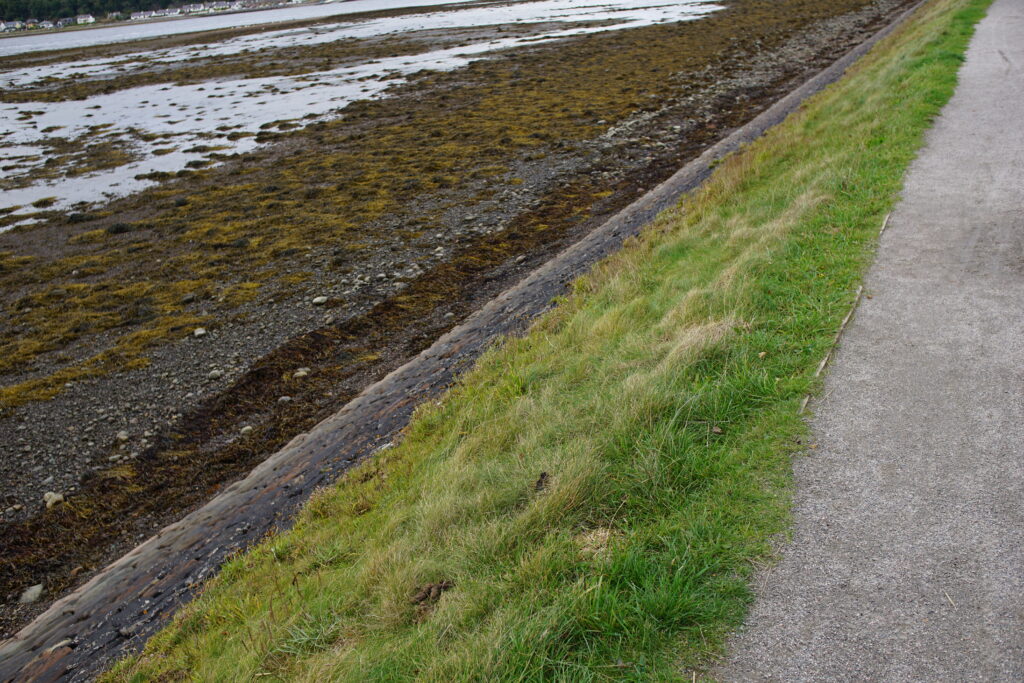
Things to look for
Look out for gorse, hawthorn and rosehips, and some fantastic lichen. You can also spot canal machinery and even a shipwreck! There is often a heron on the mudflats, and sometimes you can spot otters around the nature reserve. There is also a geocache on the route.






You might also enjoy these other short walks in and around Inverness.

